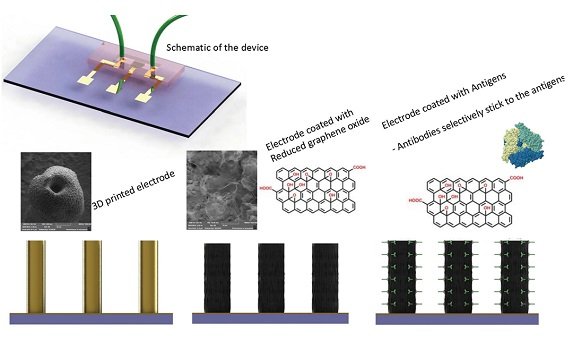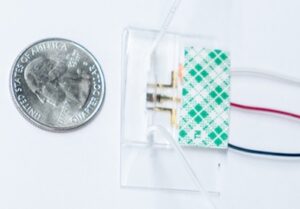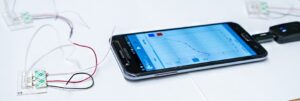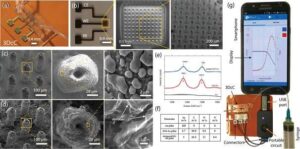
Views: 4
– Developed by researchers at Carnegie Mellon University, in collaboration with the University of Pittsburgh and UPMC; the test results are available between 10 – 15 seconds and detect the presence of two of the antibodies against SARS-CoV-2,
Minapim by Hernan Valenzuela: Rapid and effective testing can be a key tool in controlling the spread of the pandemic. The test requires a very small drop of blood from the fingertip (less than five microliters) to identify two Covid antibodies to the virus: peak S1 protein and receptor binding domain (RBD).
The test can detect concentrations of antibodies at an extremely low level, a picomolar (0.15 nanograms per milliliter), through an electrochemical reaction in a portable microfluidic device.

The results are sent almost immediately to a simple interface on a smartphone. The device can be cleaned (that is, regenerated / reusable) in one minute, using a special chemistry discovered by the researchers that allows multiple and successive readings of the same device.
Simple additive manufacturing technology, 3D aerosol jet printing, is responsible for the efficiency and accuracy of this test device. Tiny, inexpensive gold micropillary electrodes are printed at the nanoscale using aerosol droplets that are thermally sintered.
This process forms a rough and uneven surface that provides an increased surface area of the micropillaries and an enhanced electrochemical reaction, where antibodies can attach to the antigens coated on the electrode. The specific geometry allows the micropylons to carry more proteins for detection, resulting in fast and very accurate results.
The error rate of the test is very low, as the binding reaction between the antibody and the antigen used in the device is highly selective.

“This detection platform can also be used to detect other infectious diseases, potentially affecting the course of pandemics.” said Rahul Panat, associate professor, MechE
The device has a low production cost (tens of dollars). And the manufacturing capabilities already exist.
“My research team was working on high-performance 3D printed sensors to detect dopamine, a chemical in the brain, when we realized that we could adapt our work for the COVID-19 tests,” said Rahul Panat, associate professor of mechanical engineering at Carnegie Mellon, which uses specialized additive manufacturing techniques for research ranging from brain-computer interfaces to biomonitoring devices. “We changed our research to apply our experience in combating this devastating pandemic.”

Multidisciplinary research was supported by Shou-Jiang Gao, leader of the Cancer Virology Program at the UPMC Hillman Cancer Center and professor of microbiology and molecular genetics at the University of Pittsburgh. Azahar Ali, postdoctoral researcher at the Advanced Materials and Manufacturing Laboratory.
The detection platform developed by Panat and his collaborators, can also be used for the detection of other infectious diseases.
The research results were published in an article in the magazine Advanced Materials on December 22, 2020.
Source: CMU
Related article: Covid-19 database available online -195 countries